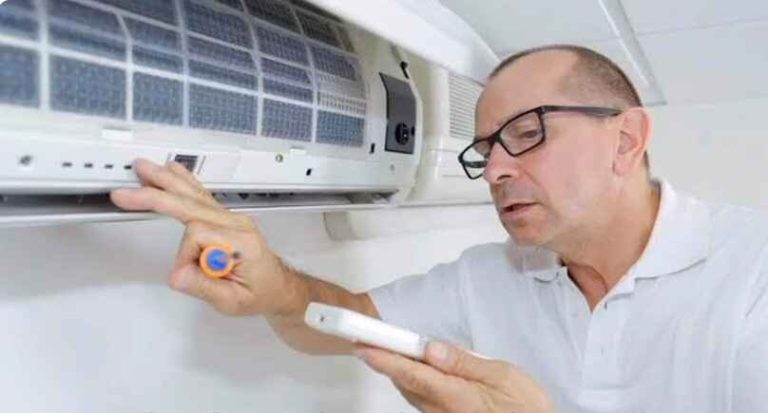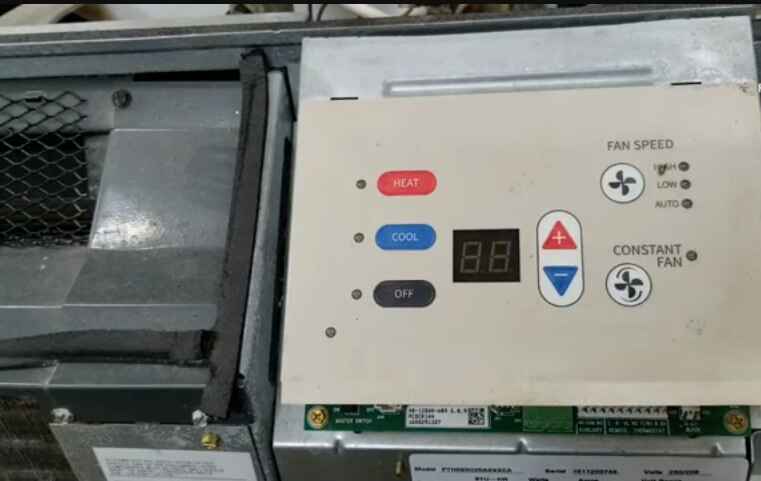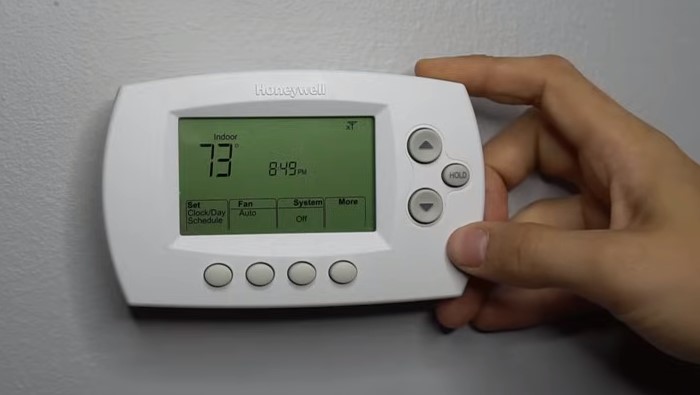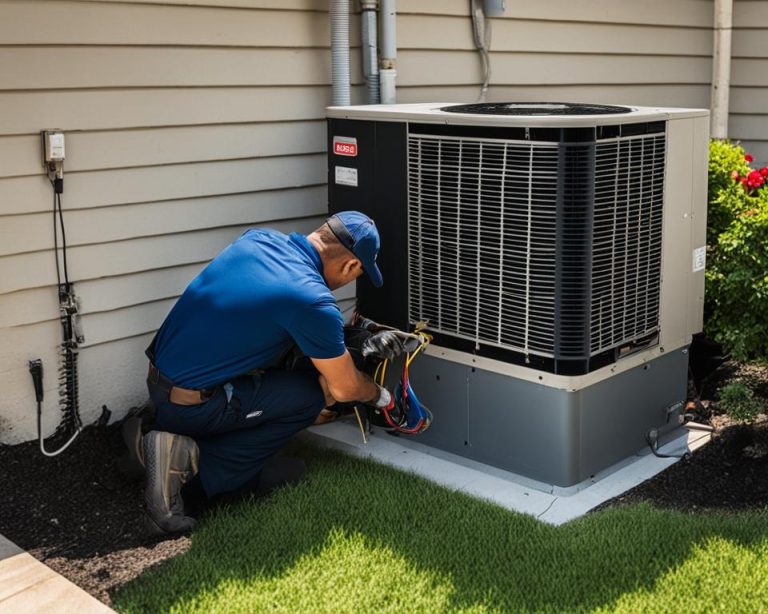To solve the AC fan not working after power outage, check the circuit breaker, and reset it if tripped. Verify fan switch on the thermostat is set to “On” or “Auto”. If the issue persists, consult the HVAC technician.
Experiencing an AC fan failure after a power outage can be frustrating, especially during scorching summer days. However, fear not! Understanding the common culprits behind AC Fan Not Working After Power Outage can empower you to troubleshoot and potentially resolve the issue without the need for professional assistance. In this beginner-friendly guide, we’ll walk you through step-by-step tips to diagnose and address the problem, helping you regain cool comfort in your home swiftly and efficiently.
Potential causes of AC fan failure after a power outage
When your AC fan fails to work following a power outage, it can be frustrating and uncomfortable, especially during the hot summer months. Understanding the possible causes can help you diagnose and resolve the issue promptly. Here are ten potential reasons why your AC fan might not be working after a power outage:
Electrical Surge Damage:
A sudden power surge during an outage can damage electrical components within your AC unit, including the fan motor. Electrical surges can overload the motor and cause it to burn out or malfunction, resulting in the AC fan not working after a power outage.
Blown Fuse or Tripped Circuit Breaker:
Power outages can sometimes cause fuses to blow or circuit breakers to trip, cutting off electricity to your AC unit. Check the circuit breaker panel to see if any breakers are tripped or fuses are blown. Resetting the breaker or replacing the fuse may restore power to your AC fan.
Faulty Capacitor:
The capacitor is a crucial component that provides the initial jolt of electricity to start the fan motor. If the capacitor is faulty or damaged due to power fluctuations during an outage, the AC fan may fail to start or operate erratically. A professional HVAC technician can test the capacitor and replace it if necessary.
Damaged Wiring:
Power outages can sometimes cause wires within your AC unit to become loose, frayed, or damaged. Faulty wiring can prevent the fan motor from receiving the necessary power to operate correctly. Inspect the wiring for any signs of damage and have a qualified technician repair or replace it as needed.
Overloaded Compressor:
Following a power outage, the compressor in your AC unit may struggle to restart, especially if it was running when the power went out. Overloading the compressor can cause it to shut down as a safety measure, resulting in the AC fan not working after a power outage. Give the compressor time to reset by turning off the AC at the thermostat for at least 30 minutes before attempting to restart it.
Thermostat Malfunction:
A malfunctioning thermostat can prevent the AC fan from turning on, even if the rest of the unit is functioning correctly. Power outages can sometimes disrupt the thermostat’s programming or cause internal damage. Check the thermostat settings and replace the batteries if necessary. If the thermostat is still not functioning properly, consider replacing it.
Frozen Evaporator Coil:
If the AC fan is not working after a power outage, it could be due to a frozen evaporator coil. Power outages can disrupt the cooling process, causing moisture to build up on the evaporator coil and freeze. This ice buildup can restrict airflow and prevent the fan from operating effectively. Turn off the AC and allow the coil to thaw completely before attempting to restart the unit.
Refrigerant Leak:
Power outages can sometimes lead to pressure fluctuations within the AC system, increasing the risk of refrigerant leaks. A refrigerant leak can cause the AC fan to malfunction, as the system may not have enough refrigerant to properly cool the air. If you suspect a refrigerant leak, contact a professional HVAC technician to locate and repair the leak and recharge the system with refrigerant.
Damaged Fan Blades:
Power outages can sometimes cause debris or other objects to enter the outdoor unit and damage the fan blades. If the fan blades are bent, warped, or obstructed, the AC fan may not be able to rotate properly, resulting in reduced airflow or complete failure. Inspect the fan blades for any signs of damage and replace them if necessary.
Internal Component Failure:
Finally, prolonged power outages or power surges can cause internal components within the AC unit, such as relays, switches, or sensors, to fail prematurely. If multiple components fail simultaneously, it can prevent the AC fan from working properly. A comprehensive inspection by a qualified HVAC technician can identify any faulty components and facilitate the necessary repairs or replacements.
Troubleshooting Steps when ac fan not working after power outage
When your AC fan is not working after a power outage, it can be a concerning situation, especially during hot summer days. However, there are several troubleshooting steps you can take to diagnose and potentially resolve the issue. Remember, safety should always be your top priority when dealing with electrical appliances. Let’s walk through the steps:
Safety precautions before proceeding:
Before attempting any troubleshooting, ensure your safety by turning off the power supply to the AC unit. This can be done by switching off the circuit breaker or disconnecting the unit from the power source. Additionally, wear appropriate protective gear, such as gloves and safety glasses, to prevent any accidents.
Now, let’s delve into the troubleshooting steps:
Check the thermostat settings:
Sometimes, the AC fan may not kick in due to incorrect thermostat settings. Ensure that the thermostat is set to the cooling mode and the temperature is set lower than the current room temperature. This ensures that the AC system is signaled to turn on the fan.
Inspect the circuit breaker and fuses:
After a power outage, the circuit breaker might have tripped or the fuses blown, causing the AC fan not to work. Check the circuit breaker panel and look for any tripped breakers. If you find one, reset it and see if the AC fan starts working. Similarly, inspect the fuses and replace any blown ones.
Examine the outdoor unit for debris or obstructions:
Sometimes, debris such as leaves, branches, or even small animals can obstruct the outdoor unit of your AC system, preventing the fan from functioning properly. Carefully inspect the outdoor unit and remove any obstructions you find. Ensure that there is proper airflow around the unit.
Test the capacitor:
The capacitor is a critical component that helps start the AC fan motor. After a power outage, the capacitor might have become faulty, causing the fan not to work. Use a multimeter to test the capacitor’s capacitance and ensure it matches the manufacturer’s specifications. If the capacitor is defective, it will need to be replaced.
Inspect the fan motor and blades for damage:
Over time, the fan motor or blades may wear out or become damaged, especially after a power outage. Visually inspect the fan motor and blades for any signs of damage, such as corrosion, rust, or bent blades. If you notice any issues, the motor or blades may need to be replaced.
Test the fan motor using a multimeter:
If everything else seems to be in working order, but the AC fan still isn’t working, you may need to test the fan motor itself. Use a multimeter to check for continuity across the motor terminals. If there is no continuity, it indicates a faulty motor that needs replacement.
Consult with a professional if needed:
If you’re unable to identify or resolve the issue on your own, it’s best to seek assistance from a professional HVAC technician. They have the expertise and tools to diagnose and repair complex AC system problems safely.
After following these troubleshooting steps, you should be able to determine the cause of your AC fan not working after a power outage and take appropriate action to fix it. Remember to prioritize safety throughout the process and don’t hesitate to seek professional help if needed.
Conclusion
In conclusion, experiencing an AC fan not working after a power outage can be frustrating and inconvenient. However, by following the troubleshooting steps outlined in this blog post, you can often resolve the issue quickly and without the need for professional assistance. Remember to check the circuit breaker, inspect the capacitor, and clean the condenser unit regularly to prevent future problems. If these solutions don’t resolve the problem, it may be time to call a professional HVAC technician for further diagnosis and repair. Don’t let a minor setback like an AC fan not working after a power outage ruin your comfort – with a bit of troubleshooting, you can often get your system up and running again in no time.







One Comment